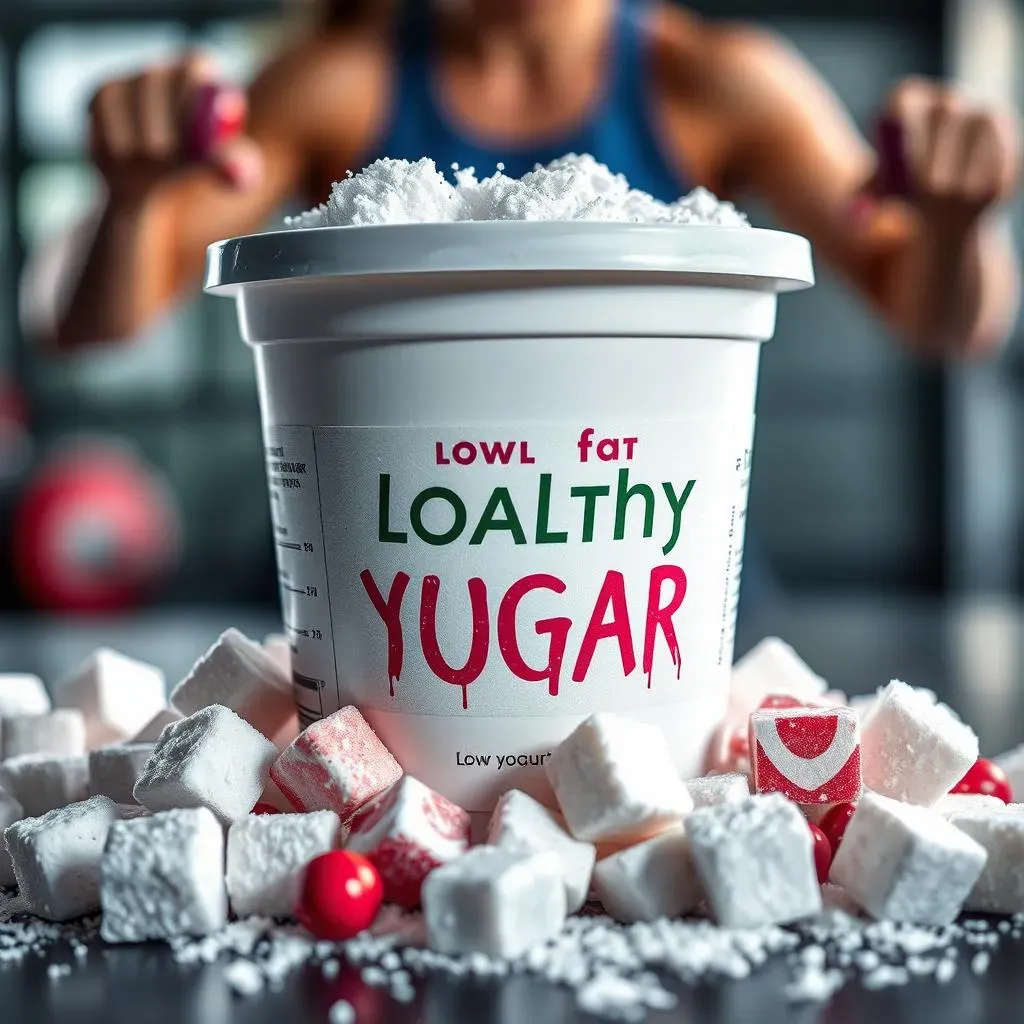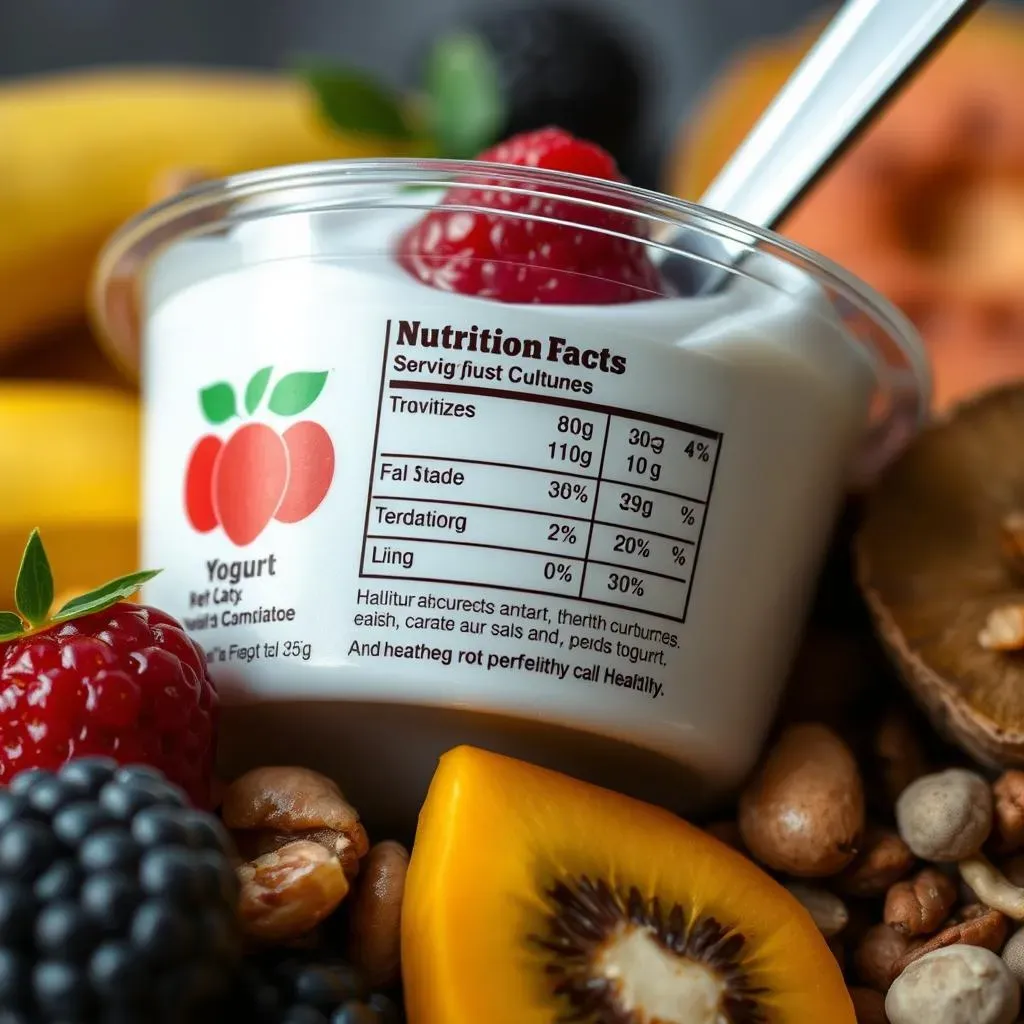Table of Contents
Navigating the grocery store aisles can feel like decoding a secret language, especially when you're bombarded with labels screaming "low fat!" You might think you're making a virtuous choice by grabbing that low-fat yogurt, but are low fat yogurts healthy as the packaging implies? Let's be real: sometimes, what's taken out is replaced with something far worse. This article dives deep into the truth about low-fat yogurts, separating fact from fiction. We'll expose the hidden sugars and sneaky additives often lurking beneath the "healthy" label, and equip you with the knowledge to make informed choices. Forget blindly trusting marketing claims. We'll explore what to look for on the nutrition label, which ingredients to avoid, and how to choose yogurts that truly contribute to a balanced diet. Get ready to rethink your yogurt obsession and discover how to enjoy this creamy treat without compromising your health.
The LowFat Deception: Are Low Fat Yogurts Really Healthy?

The LowFat Deception: Are Low Fat Yogurts Really Healthy?
The Marketing Hype vs. Reality
For years, we've been told that fat is the enemy. This message has been drilled into our heads, leading many to believe that "low fat" automatically equals "healthy." But hold on a second. What happens when you strip away the fat? The flavor and texture often disappear, and food manufacturers need to compensate somehow. That's where the deception begins. Many low-fat yogurts are loaded with added sugars, artificial sweeteners, and processed ingredients to make them palatable. It's a classic case of robbing Peter to pay Paul – you might be cutting fat, but you're loading up on other things that can sabotage your health goals.
The Full-Fat Advantage: What You're Missing Out On
Don't get me wrong, I'm not saying all full-fat yogurts are automatically health foods either, but they often have a nutritional advantage over their low-fat counterparts. Natural fats, like those found in yogurt, can actually be good for you! They help you feel fuller for longer, which can prevent overeating. Plus, they play a crucial role in hormone production and nutrient absorption. When you opt for low-fat, you might be missing out on these benefits, and the added sugars can lead to energy crashes and cravings later on. It's about making informed choices, not just blindly following the "low fat" trend.
Digging Deeper: The Ingredient List is Key
This is where things get interesting. To truly understand if a low-fat yogurt is healthy, you need to become a label detective. Start by scanning the ingredient list. Are there a bunch of artificial sweeteners like aspartame or sucralose? Is it packed with added sugars like high fructose corn syrup or cane sugar? The shorter and more recognizable the ingredient list, the better. Also, pay attention to the order of the ingredients – they're listed from highest to lowest quantity. If sugar is one of the first few ingredients, that's a red flag. Remember, knowledge is power, and reading labels is your superpower in the grocery store.
Sugar Shock: The Hidden Dangers in Low Fat Yogurts

Sugar Shock: The Hidden Dangers in Low Fat Yogurts
The Sugar Overload: A Sweet Deception
let's talk sugar. You grab a low-fat yogurt thinking you're being healthy, but BAM! You might as well be eating dessert. Food manufacturers often compensate for the lack of fat by loading up on sugar to improve the taste. This can lead to a blood sugar rollercoaster, leaving you feeling tired and craving more sugary treats. Over time, excessive sugar consumption can contribute to weight gain, insulin resistance, and an increased risk of type 2 diabetes. It's a sneaky way to undermine your health goals, all under the guise of "low fat."
Think about it: a single serving of some low-fat yogurts can contain more sugar than a candy bar! It's not just about the calories; it's about the type of calories. Sugar provides empty calories, meaning they offer little to no nutritional value. They can also disrupt your gut health, leading to inflammation and other health problems. So, before you reach for that seemingly innocent low-fat yogurt, take a closer look at the sugar content. You might be surprised by what you find.
Spotting the Culprits: Sugar in Disguise
Sugar isn't always listed as "sugar" on the label. Food manufacturers use a variety of names to sneak it into your food. High fructose corn syrup is a big one, but also watch out for cane sugar, sucrose, dextrose, maltose, and corn syrup solids. These are all different forms of sugar that can add up quickly. The key is to be aware of these sneaky aliases and to scan the entire ingredient list, not just the nutrition facts panel. The higher up these ingredients are on the list, the more sugar the yogurt contains. Being a savvy shopper means knowing what to look for and not falling for clever marketing tactics. Remember, your health is worth the extra few seconds it takes to read the label carefully.
Also, don't be fooled by yogurts that claim to be "naturally sweetened." Even natural sweeteners like honey, maple syrup, and agave still contribute to your overall sugar intake. While they might be slightly better than refined sugars, they should still be consumed in moderation. The goal is to minimize added sugars as much as possible, regardless of their source. Your body will thank you for it!
Decoding the Label: How to Choose Truly Healthy Yogurts

Decoding the Label: How to Choose Truly Healthy Yogurts
Serving Size Sanity: Know What You're Actually Eating
you've grabbed a yogurt, ready to be a label detective. First things first: scope out the serving size. This is crucial because all the nutritional information listed on the label is based on that specific serving. It's easy to mindlessly eat the entire container, but if the serving size is only half the container, you're doubling the calories, sugar, and everything else. Manufacturers often use smaller serving sizes to make their products appear healthier than they actually are. So, be realistic about how much you're actually consuming and adjust your calculations accordingly. It's a simple step that can make a big difference in understanding what you're putting into your body.
The Protein Power-Up: Why It Matters
Protein is your friend, especially when it comes to yogurt. It helps you feel full and satisfied, which can prevent overeating and keep your blood sugar stable. Look for yogurts that are higher in protein and lower in sugar. Greek yogurt is a great option because it's naturally higher in protein than regular yogurt. Some brands even add extra protein to boost the nutritional value. Aim for at least 10-15 grams of protein per serving. This will help you stay energized and focused throughout the day, without the sugar crash that often comes with low-fat, high-sugar yogurts.
Live and Active Cultures: Probiotics for the Win
Yogurt is a fermented food, which means it contains beneficial bacteria called probiotics. These probiotics can support your gut health, improve digestion, and even boost your immune system. Look for yogurts that have "live and active cultures" listed on the label. Not all yogurts contain these beneficial bacteria, so it's important to check. Also, keep in mind that some processing methods can kill the probiotics, so opt for yogurts that are minimally processed. Your gut will thank you for it! A healthy gut is essential for overall health and well-being, so make sure you're choosing yogurts that support your microbiome.
Think of probiotics as tiny superheroes fighting for your health from the inside out. They help to balance the good and bad bacteria in your gut, which can have a ripple effect on your entire body. From improving your mood to reducing inflammation, probiotics are a powerful tool for optimizing your health. So, choose your yogurt wisely and give your gut some love!
Fat Facts: Not All Fat Is the Enemy
We've been conditioned to fear fat, but the truth is, not all fat is created equal. Healthy fats, like those found in full-fat yogurt, can actually be good for you. They provide essential nutrients, support hormone production, and help you feel full and satisfied. The key is to choose yogurts with natural, unprocessed fats. Avoid yogurts that contain added oils or trans fats, as these can be harmful to your health. Also, consider the source of the fat. Grass-fed dairy, for example, is often higher in beneficial omega-3 fatty acids. Don't be afraid of fat – embrace it as part of a balanced diet!
Nutrient | Benefits | Where to Find It |
|---|---|---|
Protein | Satiety, muscle building | Greek yogurt, skyr |
Probiotics | Gut health, digestion | Yogurts with "live and active cultures" |
Healthy Fats | Hormone production, nutrient absorption | Full-fat yogurt (in moderation) |
Beyond Low Fat: Prioritizing Whole Foods and a Balanced Diet

Beyond Low Fat: Prioritizing Whole Foods and a Balanced Diet
Rethinking Your Plate: It's More Than Just Yogurt
so you're armed with the knowledge to navigate the yogurt aisle like a pro. But let's zoom out for a second and talk about the bigger picture. Focusing solely on "low fat" can lead you down a rabbit hole of processed foods and missed opportunities for real nutrition. A truly healthy diet is about balance and variety, not just obsessing over one macronutrient. Think about filling your plate with whole, unprocessed foods like fruits, vegetables, whole grains, and lean proteins. These foods provide essential vitamins, minerals, and fiber that your body needs to thrive. Yogurt can be a part of that, but it shouldn't be the whole story.
Imagine your plate as a canvas, and each food group is a different color. You want to create a vibrant and balanced masterpiece, not just a bland, beige blob of "low fat" everything. Load up on leafy greens, colorful vegetables, and lean sources of protein. These foods will nourish your body from the inside out and provide sustained energy throughout the day. And yes, you can still enjoy yogurt! Just make sure it's a healthy choice that complements the rest of your meal.
The Whole Foods Advantage: Nature's Goodness
Why are whole foods so important? Well, they're packed with nutrients that are often stripped away during processing. Think about an apple, for example. It contains fiber, vitamins, minerals, and antioxidants, all working together to support your health. Now compare that to a processed apple snack, which might be loaded with added sugars and artificial flavors. The difference is clear. Whole foods provide a complete package of nutrients, while processed foods often offer empty calories and little nutritional value. It's like comparing a symphony orchestra to a solo kazoo performance – one is rich and complex, while the other is, well, just a kazoo.
Building a Balanced Diet: A Practical Guide
So, how do you actually build a balanced diet? Start by making small, sustainable changes. Don't try to overhaul your entire eating habits overnight. Instead, focus on adding more whole foods to your meals and gradually reducing processed foods. Here are a few simple tips to get you started:
- Start your day with a healthy breakfast: Oatmeal with berries and nuts, a protein smoothie, or whole-wheat toast with avocado are all great options.
- Load up on vegetables at lunch and dinner: Aim for at least half your plate to be filled with vegetables.
- Choose lean protein sources: Chicken, fish, beans, and lentils are all excellent choices.
- Snack smart: Reach for fruits, vegetables, nuts, or a small serving of healthy yogurt.
- Drink plenty of water: Staying hydrated is essential for overall health.
The Long-Term Game: Sustainable Habits for a Healthier You
Ultimately, building a healthy diet is about creating sustainable habits that you can maintain for the long term. It's not about quick fixes or fad diets. It's about making informed choices and prioritizing your health. So, ditch the "low fat" obsession and focus on nourishing your body with whole, unprocessed foods. Your body will thank you for it!
Diet Component | Example | Benefit |
|---|---|---|
Whole Grains | Quinoa, brown rice | Fiber, sustained energy |
Lean Protein | Chicken, fish, beans | Muscle building, satiety |
Fruits & Vegetables | Berries, spinach, broccoli | Vitamins, minerals, antioxidants |
Healthy Fats | Avocado, nuts, olive oil | Hormone production, nutrient absorption |
The Verdict on Low Fat Yogurts: Choose Wisely
So, are low fat yogurts healthy? The answer, as we've seen, is a resounding "it depends." While ditching some fat might seem like a win, the added sugars and artificial ingredients often negate any potential benefits. The key takeaway here is to become a savvy label reader, prioritize whole, unprocessed foods, and don't be afraid to indulge in full-fat options in moderation. Remember, a truly healthy diet is about balance and making informed choices, not just falling for clever marketing ploys. Choose wisely, and your gut (and your taste buds) will thank you.
